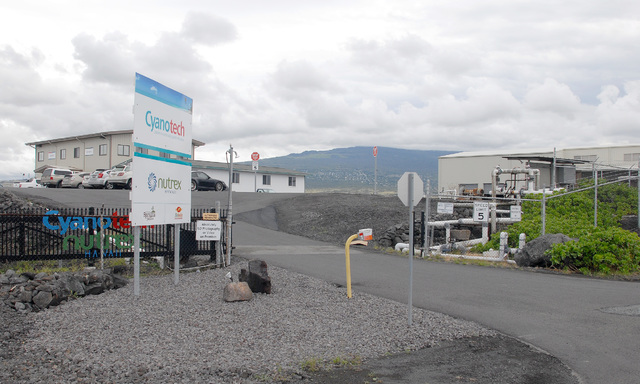The Natural Energy Laboratory of Hawaii Authority has improved its transparency and accountability to the public, but some problems remain, the state auditor said in a report issued Tuesday. ADVERTISING The Natural Energy Laboratory of Hawaii Authority has improved its
The Natural Energy Laboratory of Hawaii Authority has improved its transparency and accountability to the public, but some problems remain, the state auditor said in a report issued Tuesday.
The report, by Acting State Auditor Jan K. Yamane, is a followup to a critical audit released in 2012 by former State Auditor Marion Higa that outlined years of poor management and lack of transparency.
The latest audit said NELHA has taken care of 17 of 28 problems or 65 percent of the recommendations, while 11 percent are in progress and 18 percent remain open. Another 7 percent are no longer applicable, the auditor said.
On the plus side, NELHA has adopted a master plan, revised its strategic plan and updated its distributed energy resources strategy, auditors said. It’s also made significant improvement in compliance with state Sunshine Law requirements.
“We also noted that NELHA has achieved its fourth consecutive year of operational self-sustainability, and the authority’s contribution to Hawaii’s economy increased by 40 percent, from $87.7 million in 2010 to $122.8 million in 2013,” the audit said.
The agency has received more than $100 million from the state since 1974. Operating without state operations funding since 2010, its mission is to develop and diversify the Hawaii economy by providing resources and facilities for energy and ocean-related research, education and commercial activities in an environmentally sound and culturally sensitive manner.
Executive Director Greg Barbour said Tuesday he was pleased with the audit followup. He said NELHA is working on the final issues, which deal primarily with creating administrative rules and updating the 1998 policies and procedures manual.
“We’re very happy that they have recognized the hard work we’ve been doing,” said Barbour, who took the helm in 2011. “It’s nice to get some acknowledgement of our hard work.”
The facility relies on land leases, seawater distribution fees and federal funds for its operating budget. The land leases make up about 40 percent of its income while another 36 percent is provided by seawater pumping fees.
The original audit, which covered the period from 1990 to mid-2011, criticized for the most part the agency’s administrative functions and not fiscal mismanagement.
Among Higa’s recommendations to NELHA were to ensure new board members, as well as staff, receive orientation and training, especially in areas regarding Hawaii’s Sunshine and Ethics laws; facilitate transparency, including creating a more structured land lease rate structure and updated website; complete business and financial plans; finalize administrative rules; update the policies and procedures manual, which dates to 1995; adopt more meaningful performance indicators; and follow through with plans for an economic impact analysis.
The Natural Energy Laboratory of Hawaii Authority, located at Keahole Point, manages the facility on 870 acres of leased state land. The facility is home to 41 tenants consisting of 29 precommercial research and commercial tenants, four Gateway Center tenants, and eight research, educational and community service tenants, according to the audit.
The facility was established in 1974 with public and private grants in response to the 1973-74 oil embargo and concerns about Hawaii’s fossil fuel dependence. By 1984, it became apparent seawater could be used for research and other profitable ventures prompting the state to pass laws allowing NELHA to host commercial entities on state property as well as develop the Hawaii Ocean Science and Technology Park.
Natural Energy Laboratory Hawaii and the park officially merged in 1990 forming NELHA .
To view the follow-up report, visit https://files.hawaii.gov/auditor/Reports/2015/15-04.pdf.



